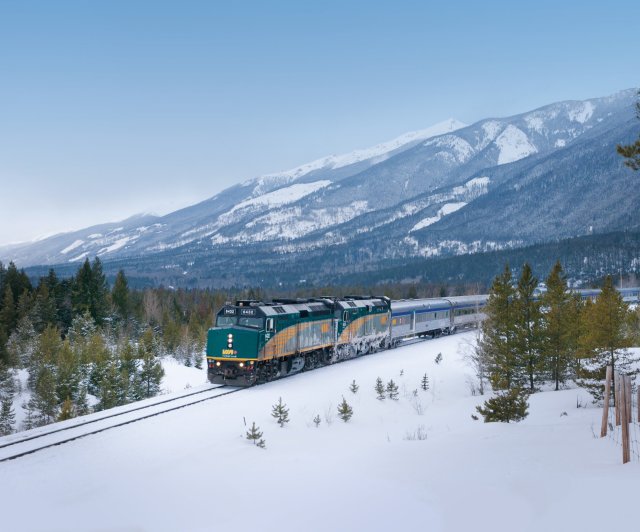Market towns and Flow Country: five slow train routes that show the UK at its finest
5 min readOne thing no one ever tells you about Europe’s TGV and AVE trains is that the view through the windows is terrible. Travelling over 200 miles per hour means beautiful Provençal lavender fields and dusty Andalucian sierras become a mere blur. Look out for too long and the brain feels mangled as after an overdose of strobe lighting.
There’s no such stress when taking Britain’s slowest trains. Running on lines off the national inter-city network, they typically chug along at 30-40 miles per hour, or even slower.
It’s like travelling in a car in a built-up area, only you’re relaxing in a window seat and passing through the country’s most beautiful rural and coastal areas – and, because these routes pre-date tourism, enjoying a history lesson as you ride.
Slow travel is good for the soul and the planet. In recent times, the UK’s rail system has failed as a way of getting from A to B; even when strikes are off, services can be shoddy. But for leisure and pleasure, old-school train lines are a great way to holiday. Switch off Portillo, and enjoy the ride yourself.
Far North Line
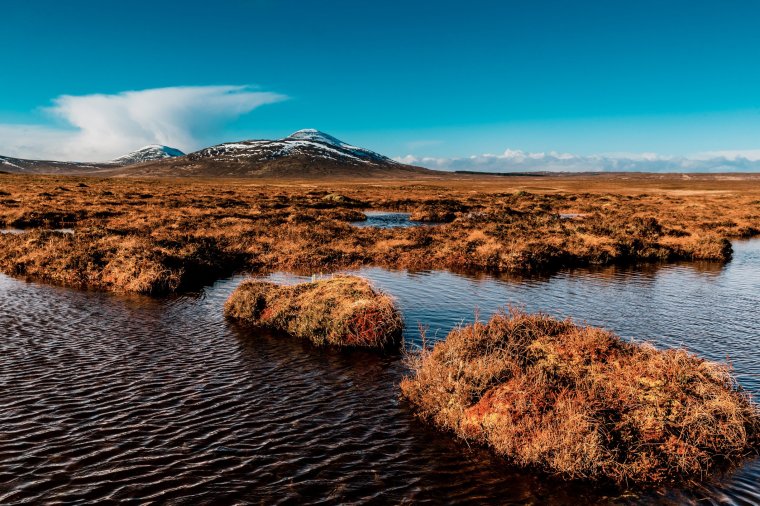
If you make the 161-mile journey from Inverness northeast to Wick and Thurso, chances are you’ve already travelled by train through beautiful Highlands landscapes. The Far North Line gently leaves behind peaks and glens to reveal the subtle, beguiling expanse of the Flow Country: the largest area of blanket bog on earth.
The precious peatland has been evolving for more than 10,000 years and the peat is 10 metres deep in areas. It’s mainly flat, with some hills and undulations. The sphagnum mosses glow green under sunshine, turning moody when the clouds come; as they do, as it’s rain and a cool climate that have created this ecosystem.
The train, running on an embankment, affords a vantage point to see shapes and colours. The area was exploited for forestry in the 70s and 80s, but is now being teased back to its original state. Merlin, short-eared owls and golden eagles hunt over the mosses and pools. Divers, plover and greenshank feed and nest in the wetlands. Micro-habitats support insects, spiders, amphibians, reptiles and small mammals like shrews.
In February 2023, a bid was submitted to Unesco to recognise this magical region as a world heritage site. A decision is expected later this year.
Recommended stops: Helmsdale for sea views and the La Mirage restaurant, Forsinard for a viewing tower, Lairg for Loch Shin, Wick for history, Thurso for walks.
How slow? Journey time 4 hours 15 minutes; average speed 38 miles per hour
Lancaster to Carlisle
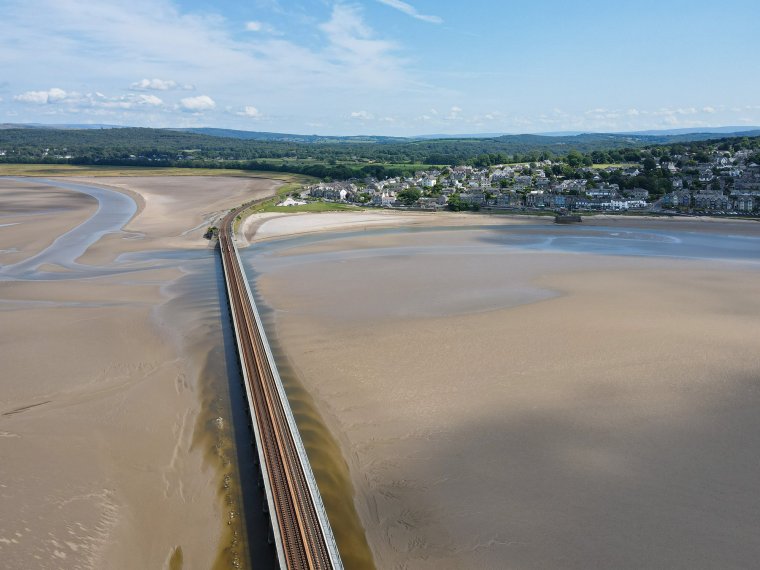
The combined Furness and Cumbrian Coast Lines run for 113 miles along the western margin of the Lake District. If it seems wilfully eccentric to skirt England’s largest national park and most famous beauty spot, there’s plenty to see en route.
The journey takes in the 51-pier Arnside Viaduct across the river Kent estuary beside Morecambe Bay – the largest area of intertidal mudflats and sand – the Irish sea, farmland, and low cliffs, and there are occasional glimpses of the fells.
The direct service calls at 29 stations (some are request stops), including Carnforth (famous for its role in Brief Encounter), Sellafield (site of a decommissioned nuclear power station) and St Bees (the western end of the Coast to Coast walk).
If you absolutely love your slow trains, you can return to Lancaster on the famous Settle-Carlisle line, by way of the Ribblehead Viaduct.
Recommended stops: Ulverston for the Laurel and Hardy Museum, Barrow-in Furness for industrial history, Lancaster for the Castle.
How slow? Journey time 3 hours 27 minutes; average speed 32 miles per hour.
Heart of Wales Line
This picturesque 121-mile line connects Swansea and Shrewsbury, making 32 stops en route. It was built in the 1850s and 1860s to transport coal from mines deep inland to ports and foundry towns along the coast.
The first leg of the journey is coastal, as the train travels west to Llanelli to pick up passengers before beginning its long odyssey through rural Carmarthenshire and Powys.
Pretty market towns line the route, including Llandeilo, Llandovery and Knighton, and three spa towns.
Heading north, the line climbs steadily to Sugar Loaf station, close to its namesake Marilyn, and ascends again after Llandrindod Wells, to Llangynllo Tunnel, where it reaches its highest point at 980ft (299 m) above sea level.
This is Deep Wales: green, thinly populated, rich in history and myth, with the Cambrian Mountains on one side and the Valleys and Bannau Brycheiniog national park on the other.
Recommended stops: Sugar Loaf for a hill walk, Swansea for the Dylan Thomas sites, Llanelli for the Wales Coast Path.
How slow? Journey time 3 hours 59 minutes; average speed: 30 miles per hour
The Dartmoor Line
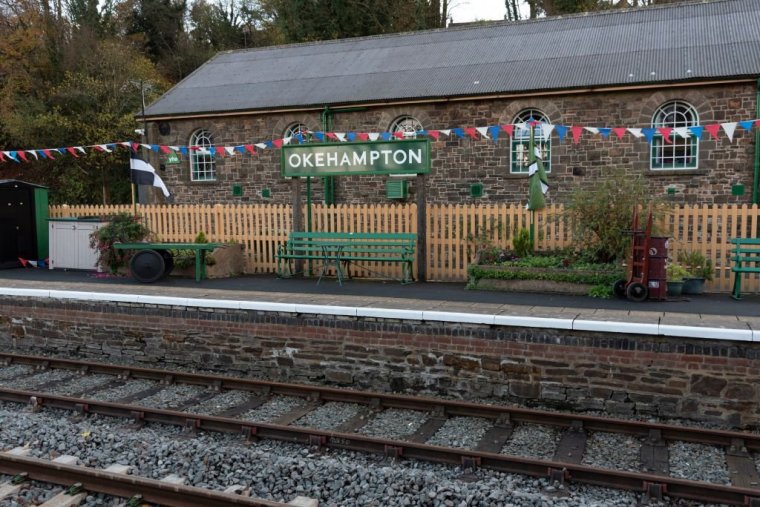
The journey from Exeter Central to Okehampton is only 14 miles long so we’re pretty much in toy train territory. But this service, reopened in 2021 after a 50-year absence, provides a vital work and shopping link for the residents of the towns and villages of central Devon, and a very useful leisure service for anyone who wants to explore the northern edge of Dartmoor – which includes the two highest points, High Willhays and Yes Tor.
The train only makes stops at Exeter’s main station, St Davids, Newton St Cyres and Crediton. The latter, a tiny township, had a cathedral until the 11th century. On the site now stands the Grade I-listed parish church, which used to be called the Collegiate Church of the Holy Cross and the Mother of Him Who Hung Thereon.
Recommended stops: Crediton for history, Okehampton for hikes.
How slow? Journey time 41 minutes; average speed 20 miles per hour
The Wirral Line
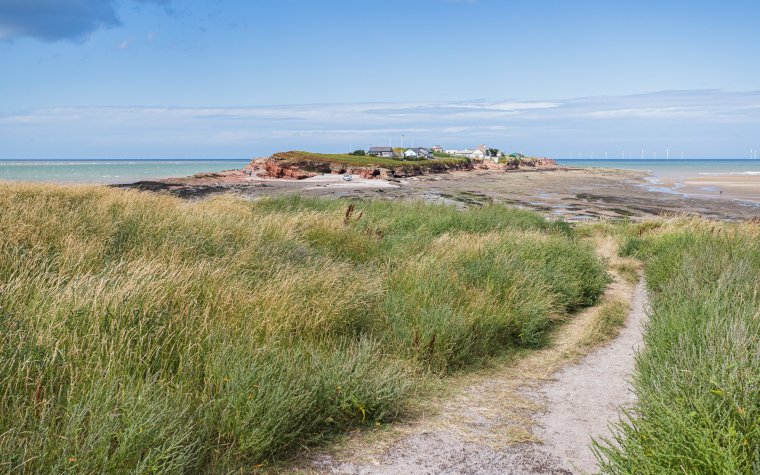
This 17-mile all-stopper between Chester and Liverpool is aimed at commuters. But whereas suburban lines in London have fast and slow tracks, users of the Wirral line have no choice.
It has enjoyed some notoriety as the slowest inter-city in the country, but on the upside offers a chance to see the woodlands, industrial sites and other mysteries of a peninsula that is within Cheshire but also part of Liverpool’s sprawl.
A lot of the towns look innocuous, but don’t be fooled. Bromborough may well be Brunanburh, where king Athelstan of England triumphed against three rival kings in 937 – said by some historians to be the most important battle before Hastings.
Recommended stops: Port Sunlight for the model village, Birkenhead for Hamilton Square.
How slow? Journey time 45 minutes; average speed 22 miles per hour
